The golden eagle is one of the best-known birds of prey in the Northern Hemisphere.
It is the most widely distributed species of eagle. These majestic birds range from Mexico through much of western North America as far north as Alaska; they also appear in the east but are uncommon. Golden eagles are also found in Asia, northern Africa, and Europe.
Like all eagles, it belongs to the family Accipitridae.
With broad, rounded wings, the colors of the eagle’s feathers range from black-brown to dark brown.But it’s the striking golden head and neck that give the bird its common name.
The golden eagle is long-lived, with a life span in the wild up to 38 years and up to 50 years in captivity.
Measuring 75 to 90 centimeters (2.5 to 3 feet) in length, the golden eagle has a wingspan from 1.9 to 2.3 meters (6.2 to 7.4 feet) .
Females weight from 3.6 to 6.6 kilograms (7.9 to 14.5 pounds), males weight from 2.8 to 4.5 kilograms (6.2 to 9.9 pounds).
They are extremely swift, and can reach maximum air speed of 320 kilometers (200 miles) per hour!
Golden eagles have large eyes that take up most of the space of the eagle’s head. Their keen eyes can see clearly and in color, allowing the eagle to spot movement from a long distance.
Their eyes don’t move much in the eye socket, but an eagle can rotate its head about 270 degrees, just like an owl can, to look around. Golden eagles also have a clear eyelid that protects their precious eyes from dust and dirt.
Golden eagles need the open space of mountains, plateaus, and steppes. Yet they are also found in prairie, scrubland, desert, and tundra habitats. They range from sea level to high mountains such as the Alps and the Himalayas.
Golden eagles can fly hundreds of kilometers while foraging for their food.
Golden eagle pairs maintain territories that may be as large as 155 square kilometers (60 square miles) and may attack eagle intruders by diving at them or locking talons. Golden eagles are much more aggressive than bald eagles.
Golden eagles are generally solitary or found in pairs, however, wintering adults may also be found in groups during times of extreme weather or very abundant food.
Golden eagles are excellent hunters. They often work in pairs while hunting: one eagle drives the prey to its waiting partner.The talons on their feet kill and carry the prey, while the beak is only for eating.
Prey includes rabbits, marmots, hares, ground squirrels, mice, and sometimes slow-flying birds, martens, foxes, and even deer. They may also eat carrion if live prey is scarce.
After a successful hunt and meal, the golden eagle can go for several days before its next meal.
Adult golden eagles have little to fear from natural predators, although crows, jays, and other raptors often harass them. Eagle chicks are not so lucky, as wolverines and grizzly bears may prey on them.
Golden Eagles are monogamous and may mate for life.
Golden eagles are mostly silent, except during the breeding season when they make a shrill, high-pitched note repeated over and over.
The male often puts on an aerial exhibit as part of his courtship. He folds his wings and drops headfirst until close to the ground, when he spreads his wings to soar aloft and repeat the action.
Their nests have been recorded being as much as 1.8 meters (6 feet) in diameter and can be found on cliffs, in trees, on the ground, windmills, and on towers.They often returning for several breeding to the same nest.
Females lay from 1 to 4 eggs, and both parents incubate them for 40 to 45 days.
The chicks, called eaglets, hatch in the order laid. The oldest chick often attacks and sometimes even kills its younger sibling.
The eaglets are fed by both parents. The male brings the preys at nest where the female feeds and tends the eaglets.
Eaglets fledges between 50 and 80 days after hatching, but they still depends on adults for food for some months.
Parents may tolerate the young eagles within the home range until the next breeding season.
Golden eagles living in the northern parts of North America and Asia migrate south in winter.
In central Asia, golden eagles are sometimes trained for falconry. Hunters in Kazakhstan still use these eagles to catch deer and antelope.
Falconers in medieval Europe referred to golden eagles as royal eagles.
In Greek and Roman mythology, the golden eagle was the messenger of the gods.
On a global scale, the golden eagle is not considered threatened by the IUCN.

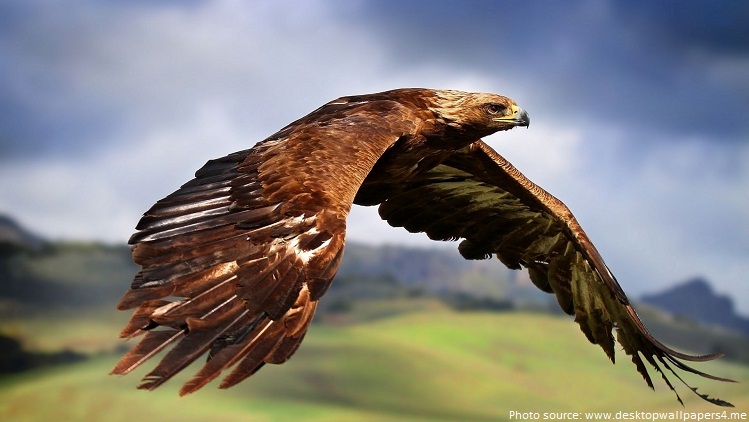
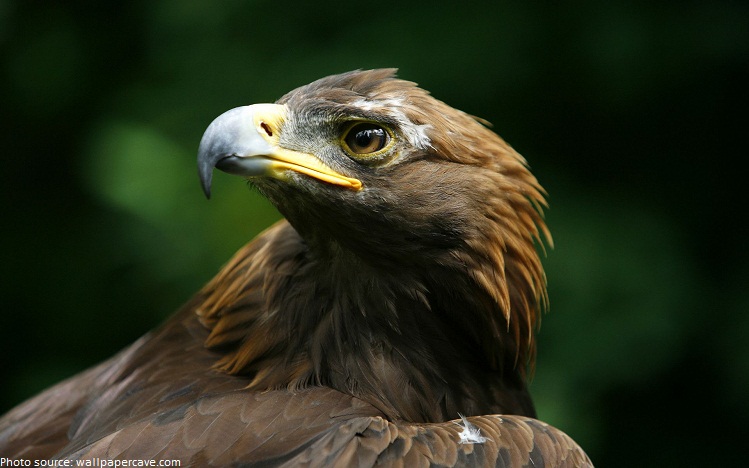
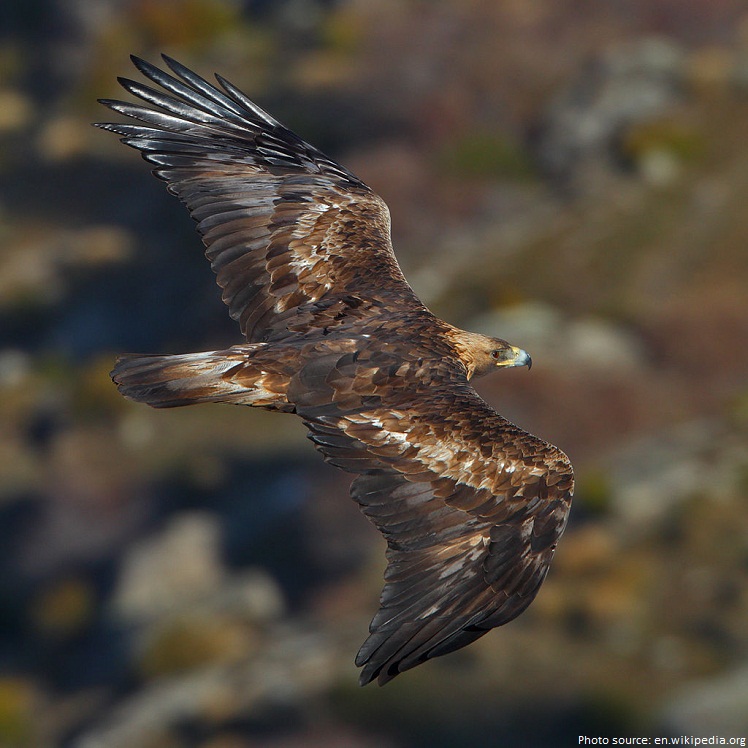
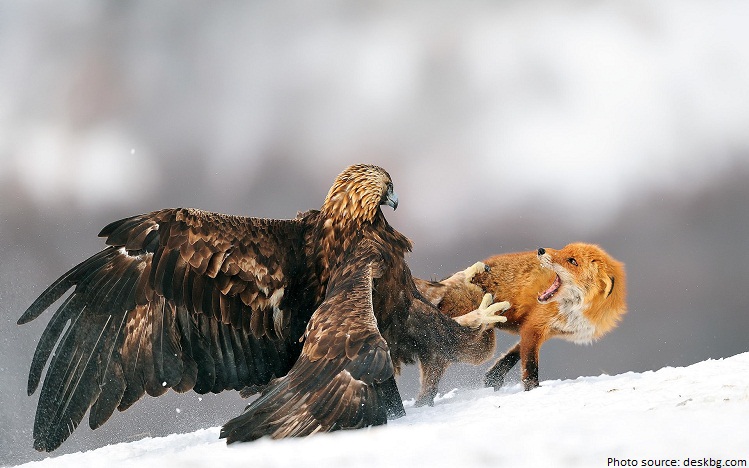
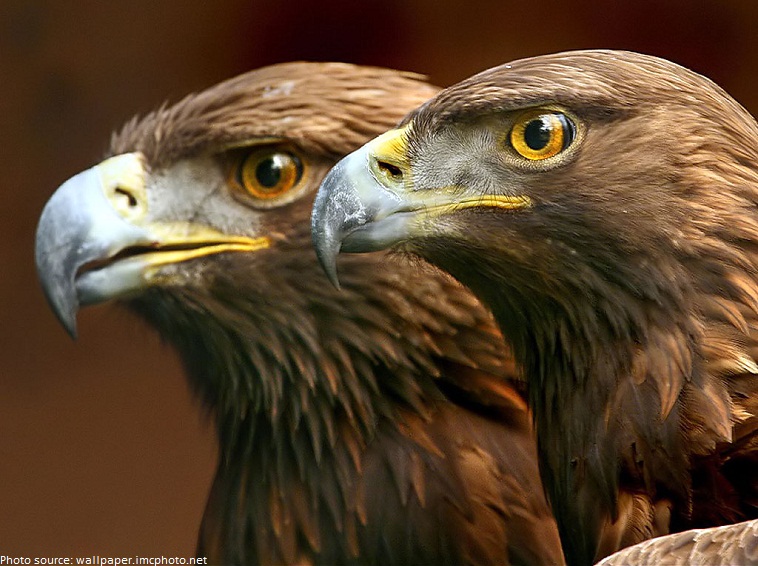

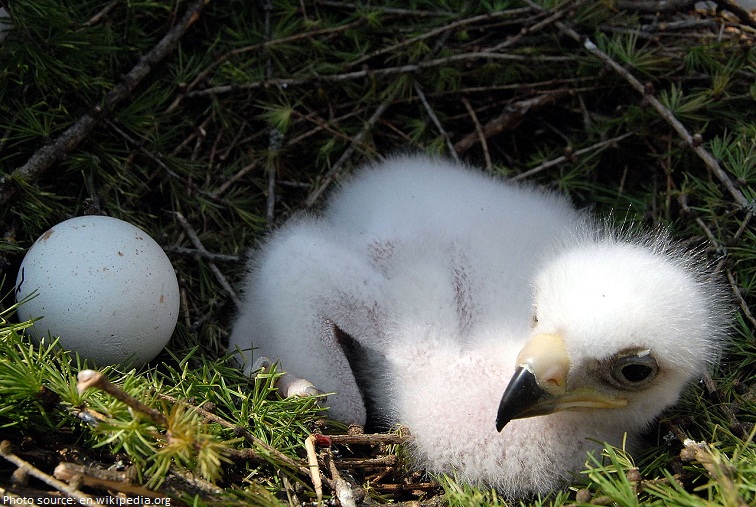
Comments are closed.